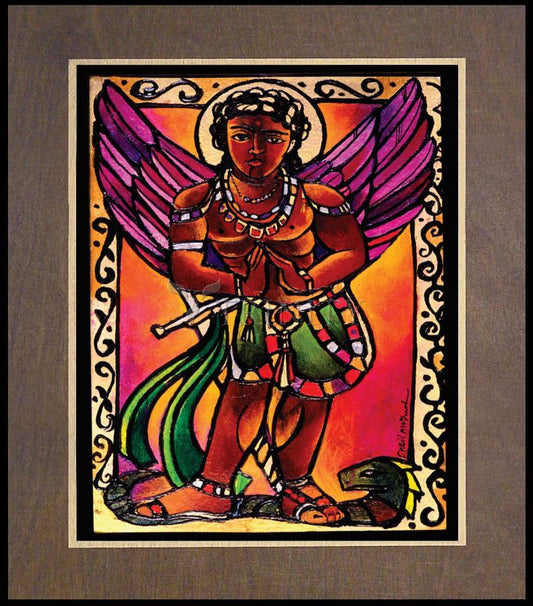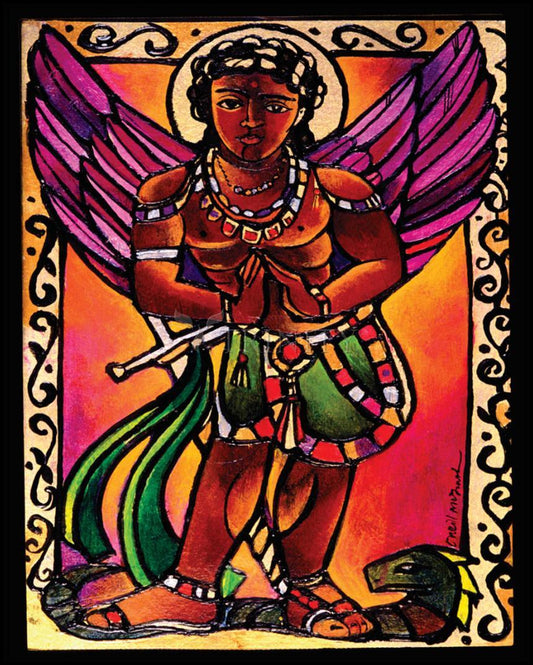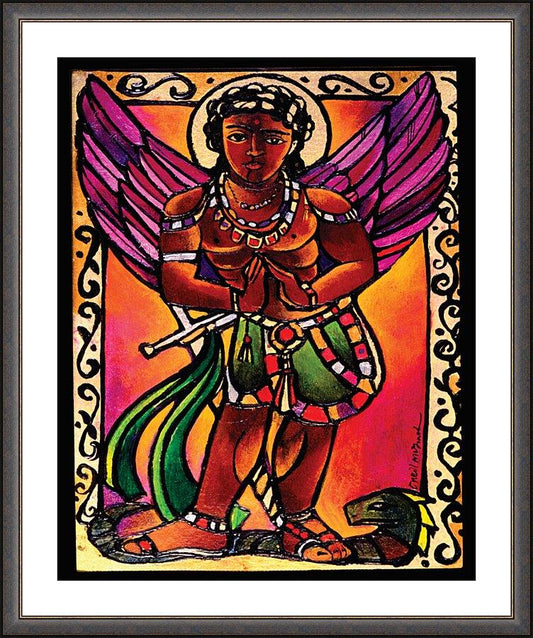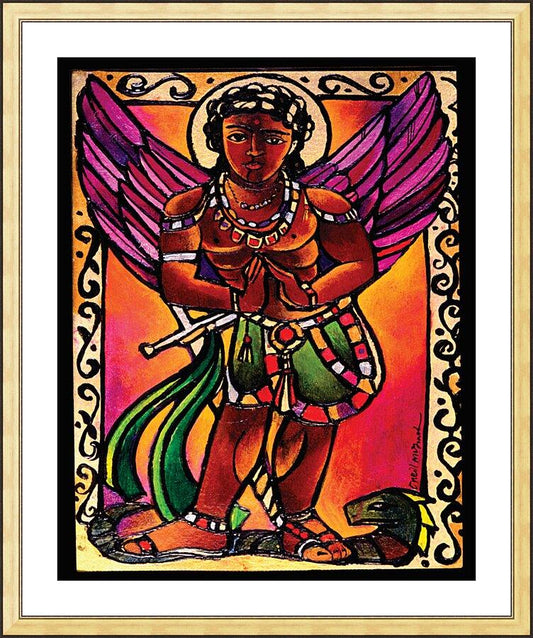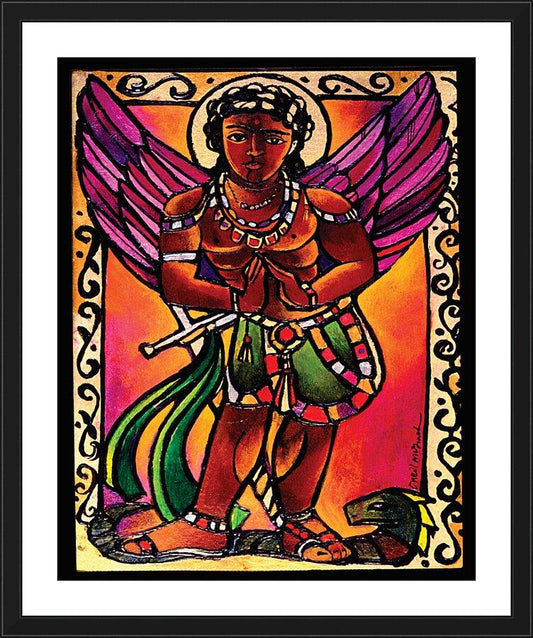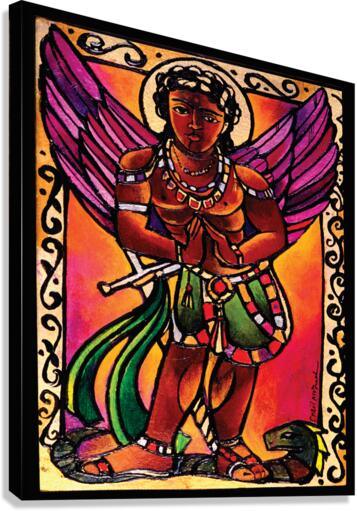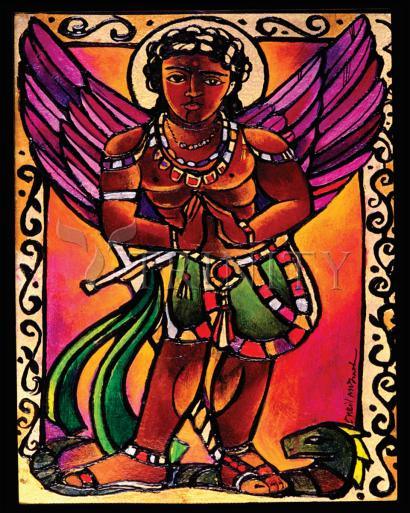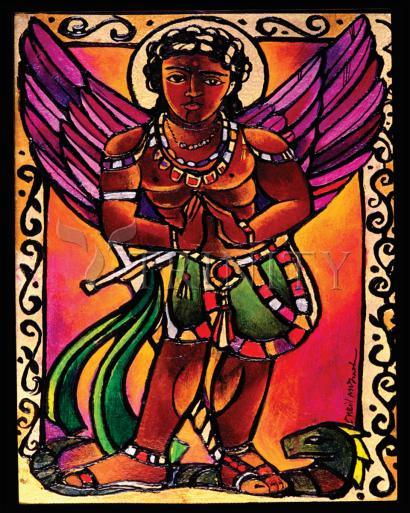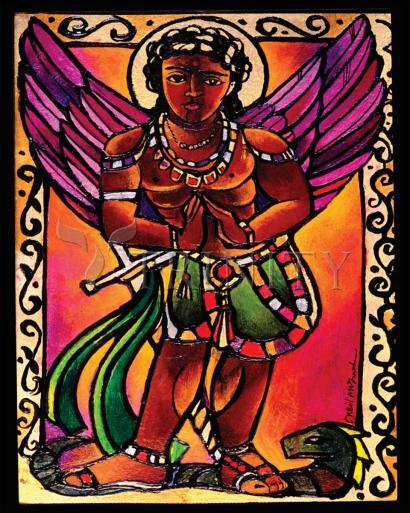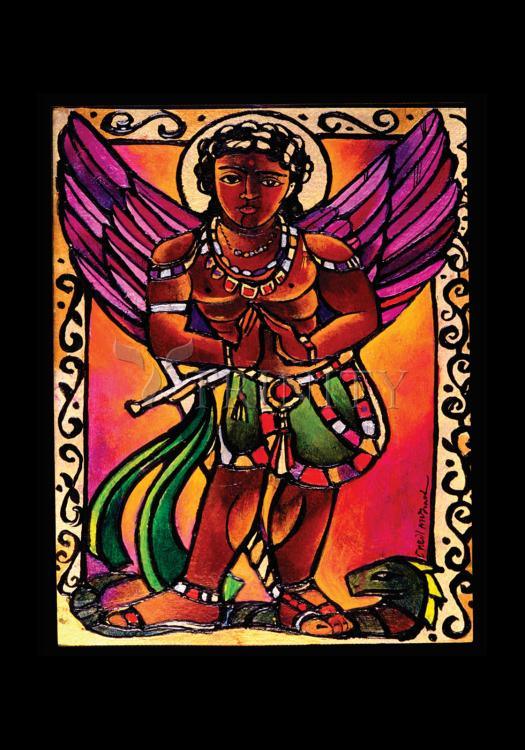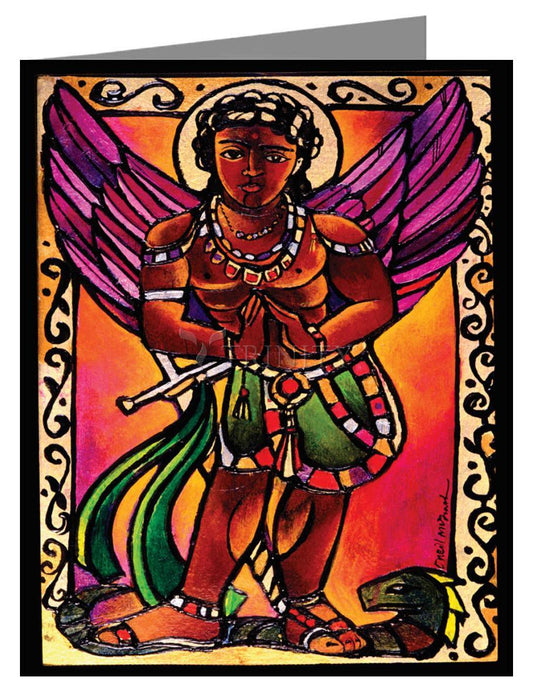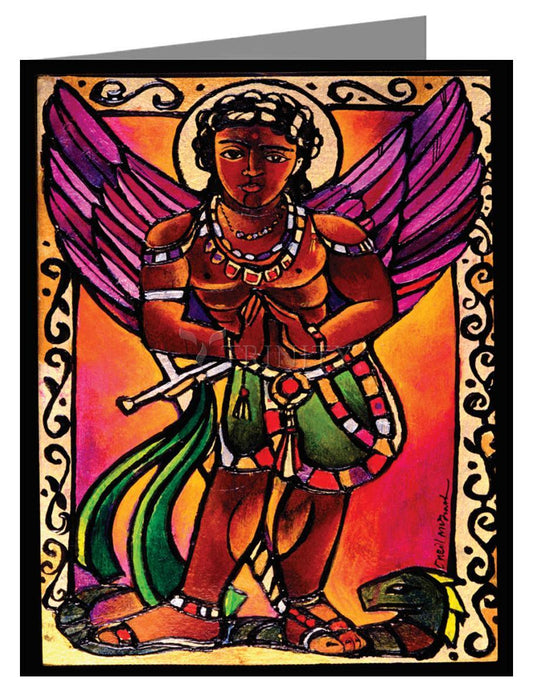The Orthodox Church celebrates the Miracle at Chonae on September 6. The pious legend surrounding the event states that Saint John the Apostle, when preaching nearby, foretold the appearance of Michael at Cheretopa near Lake Salda, where a healing spring appeared soon after the Apostle left; in gratitude for the healing of his daughter, one pilgrim built a church on the site. Local pagans, who are described as jealous of the healing power of the spring and the church, attempt to drown the church by redirecting the river, but the Archangel, "in the likeness of a column of fire", split the bedrock to open up a new bed for the stream, directing the flow away from the church. The legend is supposed to have predated the actual events, but the 5th"7th century texts that refer to the miracle at Chonae formed the basis of specific paradigms for "properly approaching" angelic intermediaries for more effective prayers within the Christian culture.
There is a late 5th century legend in Cornwall, UK that the Archangel appeared to fishermen on St Michael's Mount. According to author Richard Freeman Johnson this legend is likely a nationalistic twist to a myth. Cornish legends also hold that the mount itself was constructed by giants and that King Arthur battled a giant there.
The legend of the apparition of the Archangel at around 490 AD at a secluded hilltop cave on Monte Gargano in Italy gained a following among the Lombards in the immediate period thereafter, and by the 8th century pilgrims arrived from as far away as England. The Tridentine Calendar included a feast of the apparition on 8 May, the date of the 663 victory over the Greek Neapolitans that the Lombards of Manfredonia attributed to Saint Michael. The feast remained in the Roman liturgical calendar until removed in the revision of Pope John XXIII. The Sanctuary of Monte Sant'Angelo at Gargano is a major Catholic pilgrimage site.
According to Roman legends, while a devastating plague persisted in Rome, Archangel Michael appeared with a sword over the mausoleum of Hadrian, in apparent answer to the prayers of Pope St Gregory I the Great (c. 590"604) that the plague should cease. After the plague ended, in honor of the occasion, the pope called the mausoleum "Castel Sant'Angelo" (Castle of the Holy Angel), the name by which it is still known.
According to Norman legend, Michael is said to have appeared to St Aubert, Bishop of Avranches, in 708, giving instruction to build a church on the rocky islet now known as Mont Saint-Michel. In 966 the Duke of Normandy commissioned a Benedictine abbey on the mount, and it remains a major pilgrimage site.
A Portuguese Carmelite nun, Antónia d'Astónaco, reported an apparition and private revelation of the Archangel Michael who had told to this devoted Servant of God, in 1751, that he would like to be honored, and God glorified, by the praying of nine special invocations. These nine invocations correspond to invocations to the nine choirs of angels and origins the famous Chaplet of Saint Michael. This private revelation and prayers were approved by Pope Pius IX in 1851.
From 1961 to 1965, four young schoolgirls had reported several apparitions of Archangel Michael in the small village of Garabandal, Spain. At Garabandal, the apparitions of the Archangel Michael were mainly reported as announcing the arrivals of the Virgin Mary. The Catholic Church has neither approved nor condemned the Garabandal apparitions.



